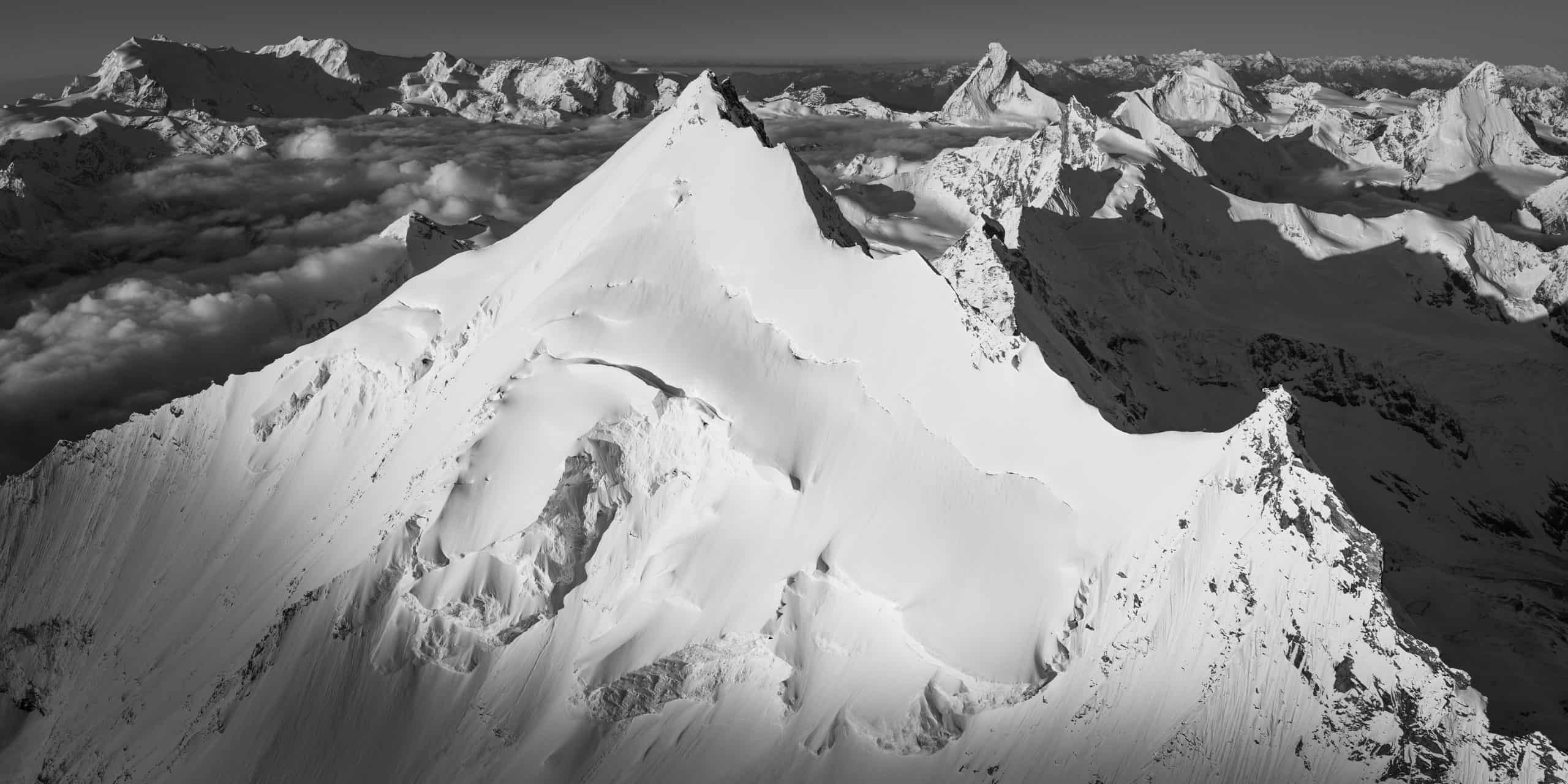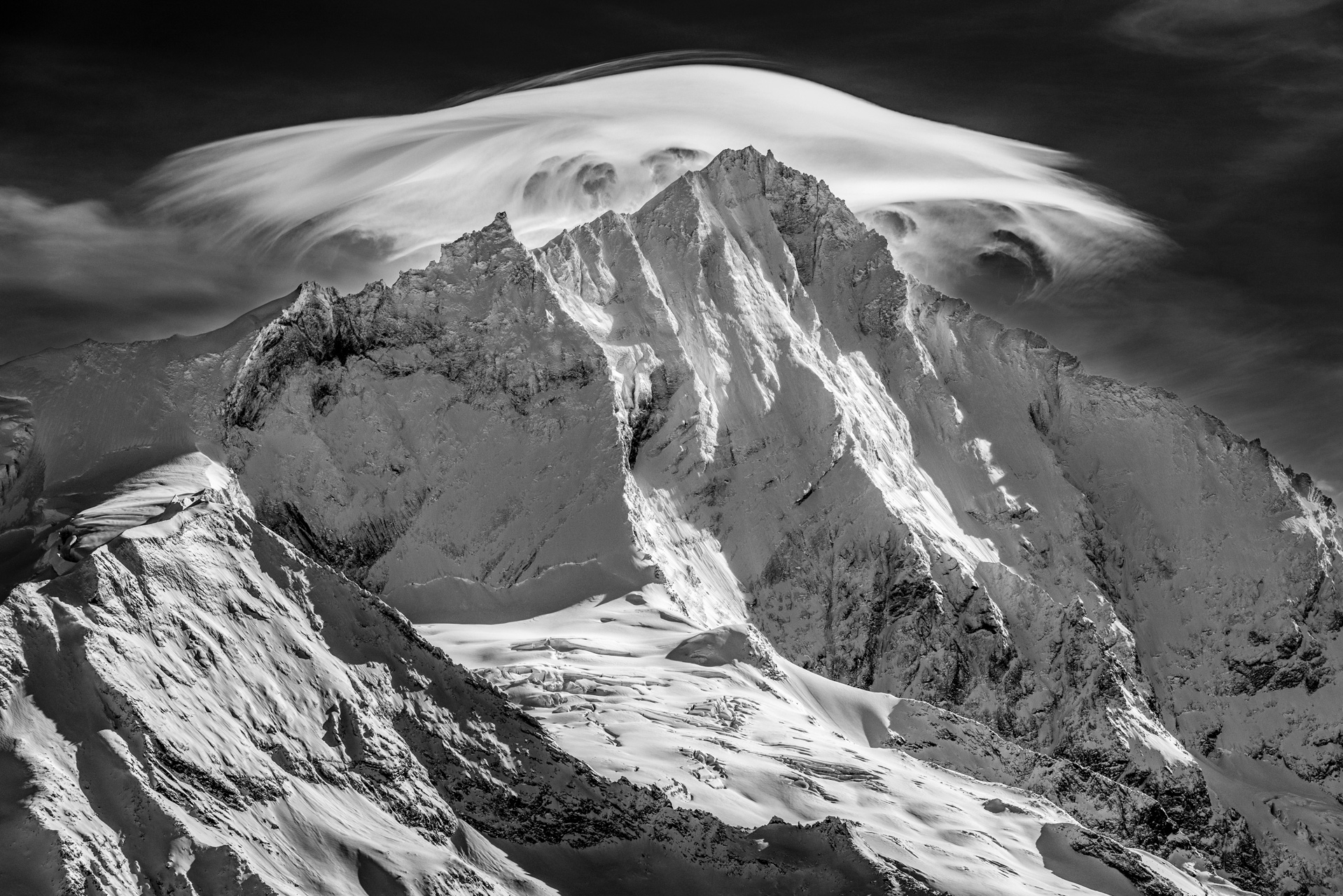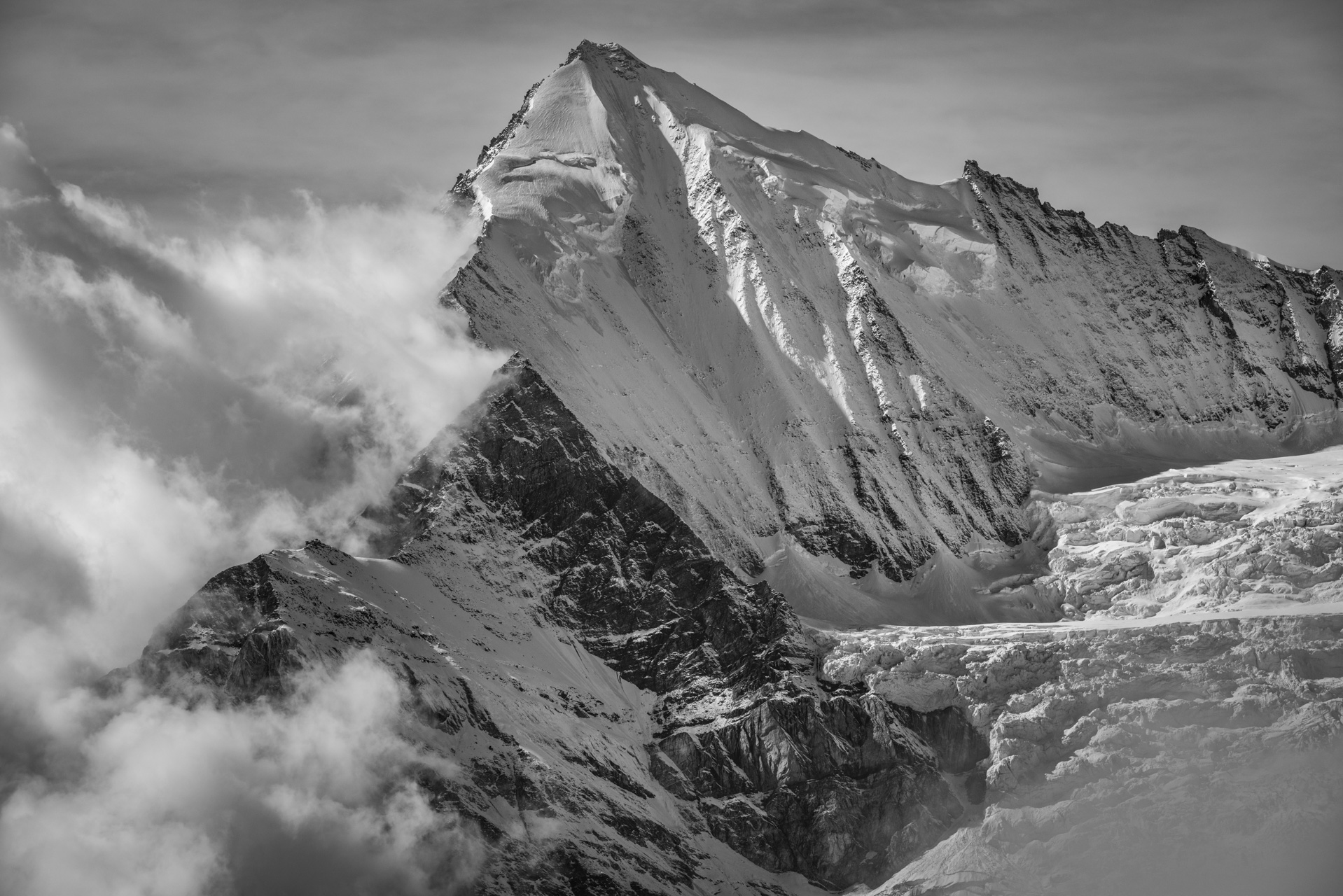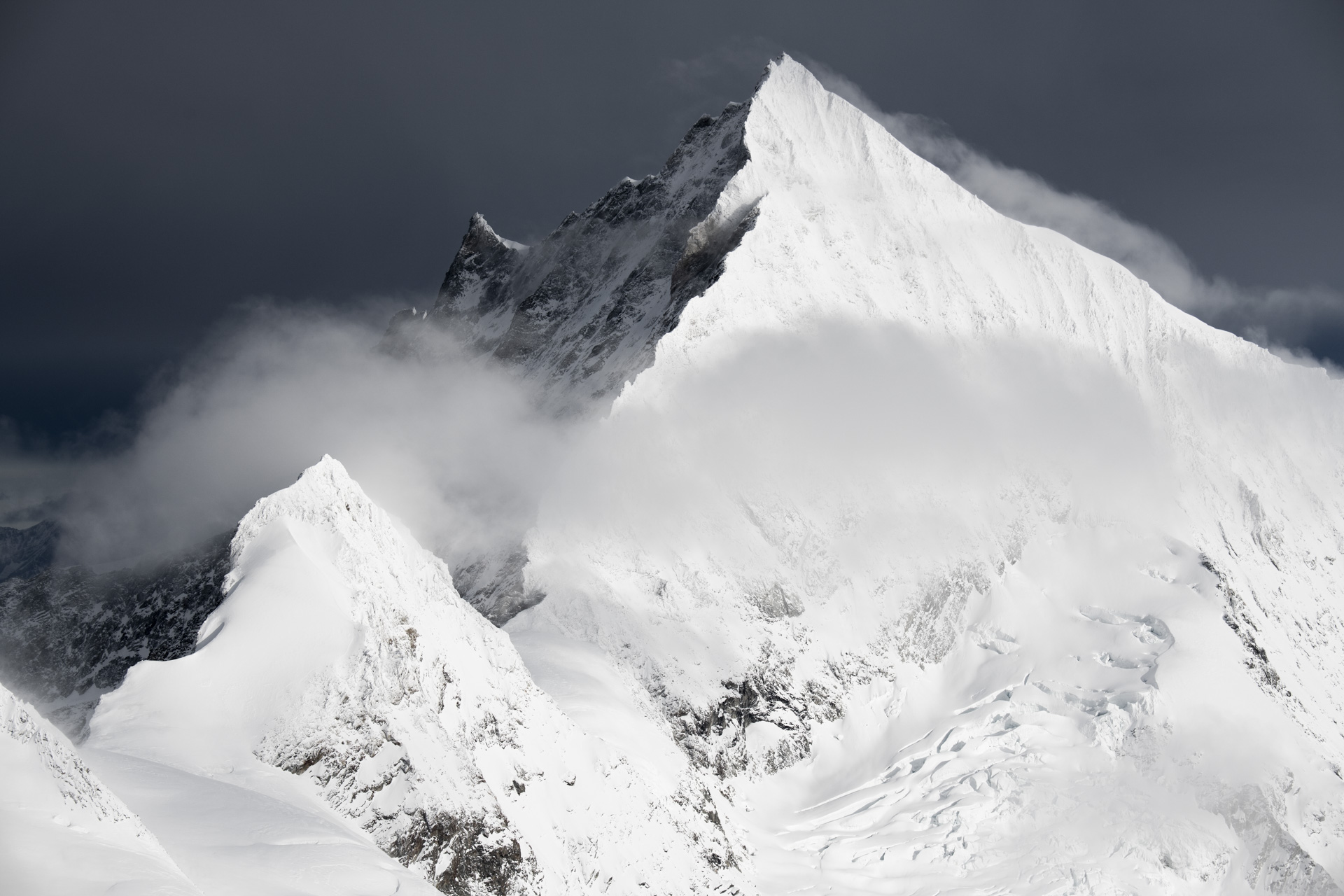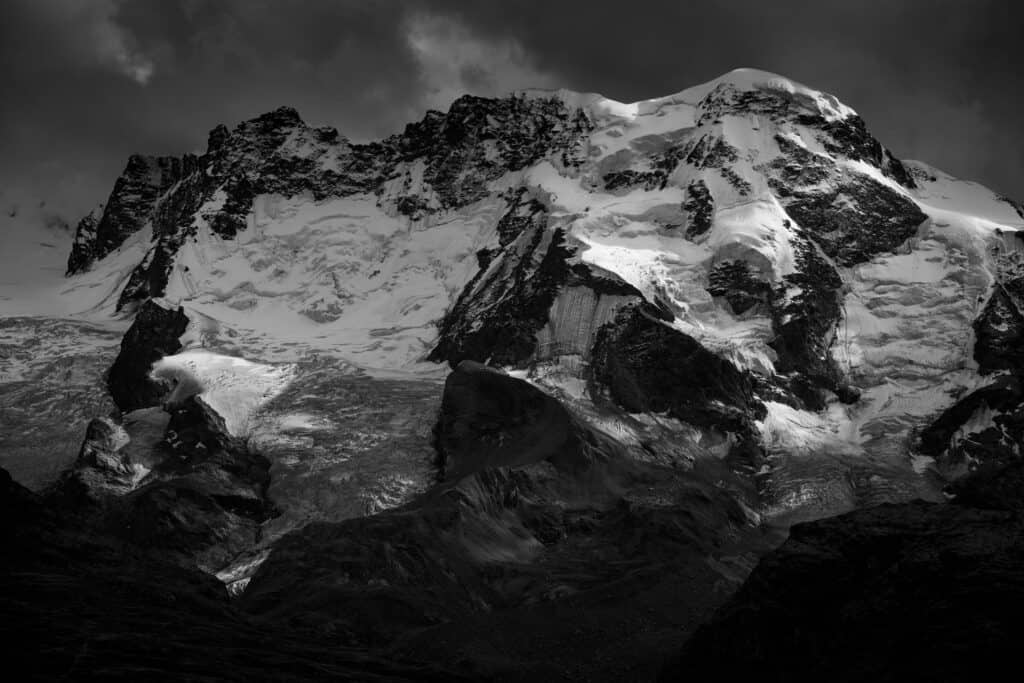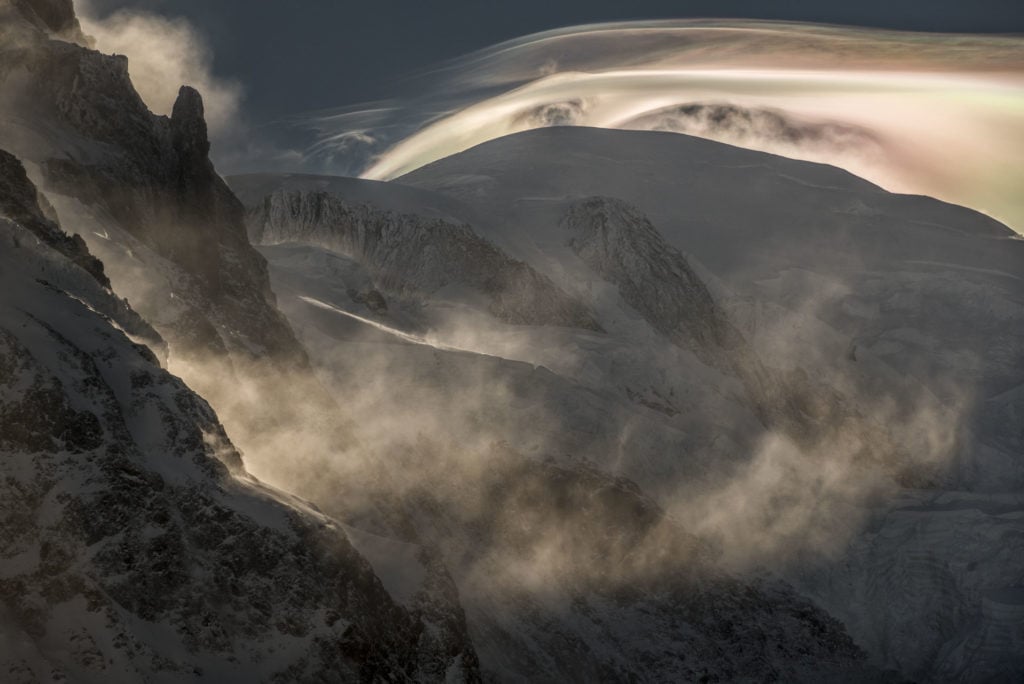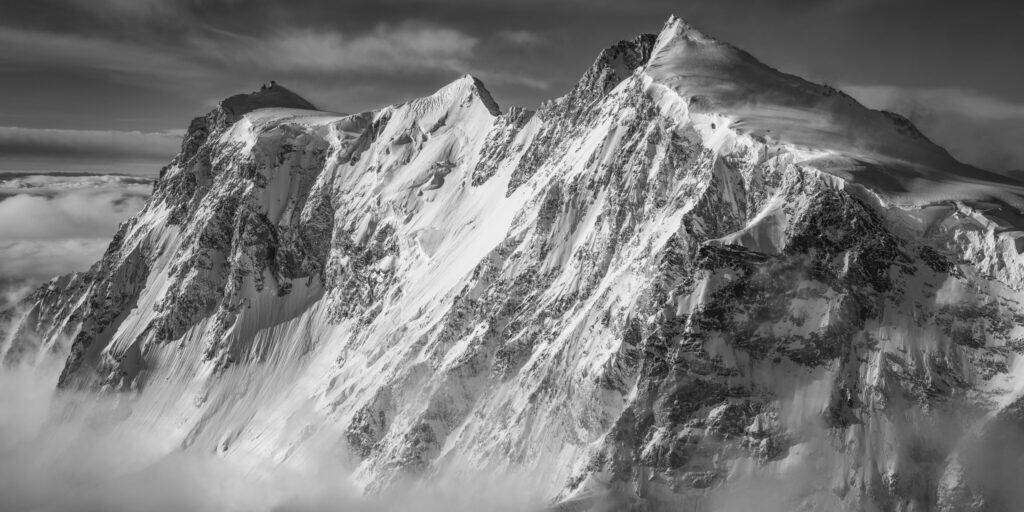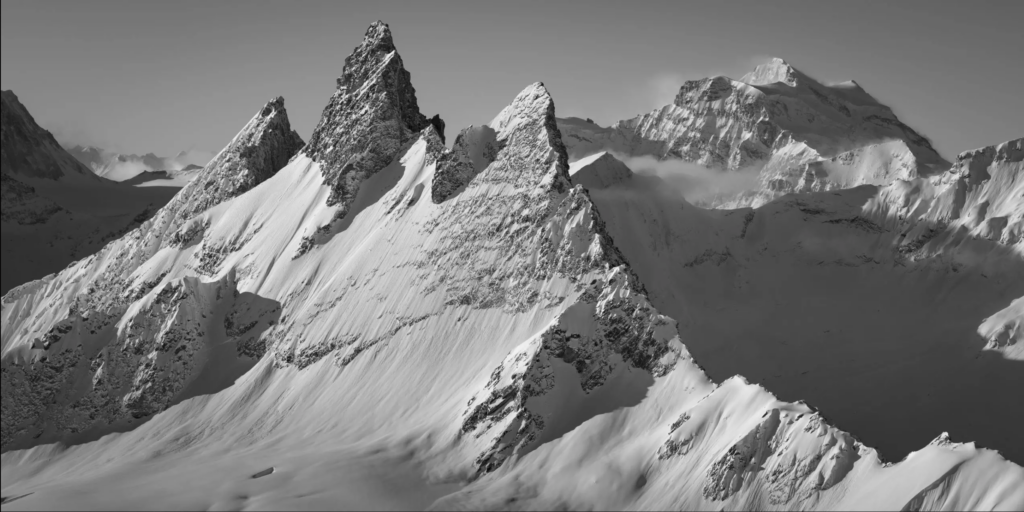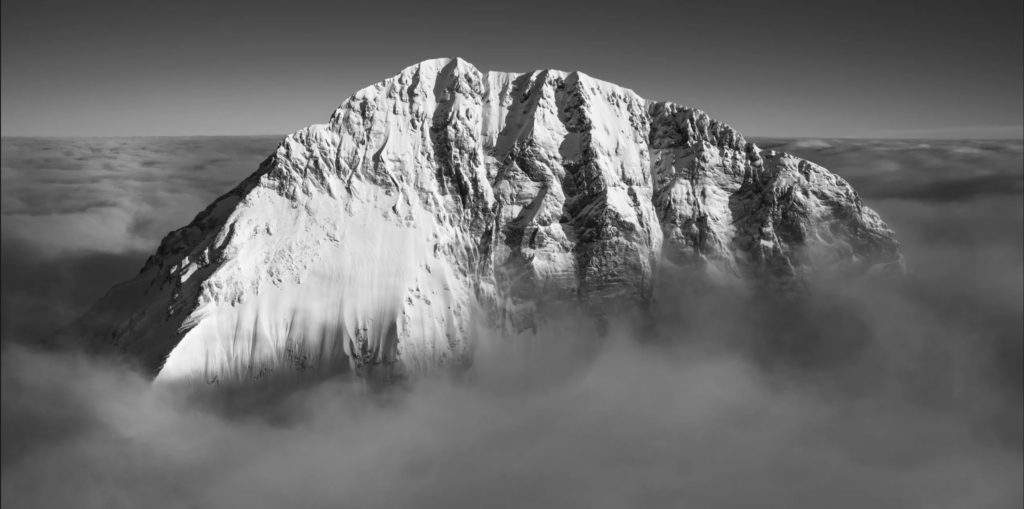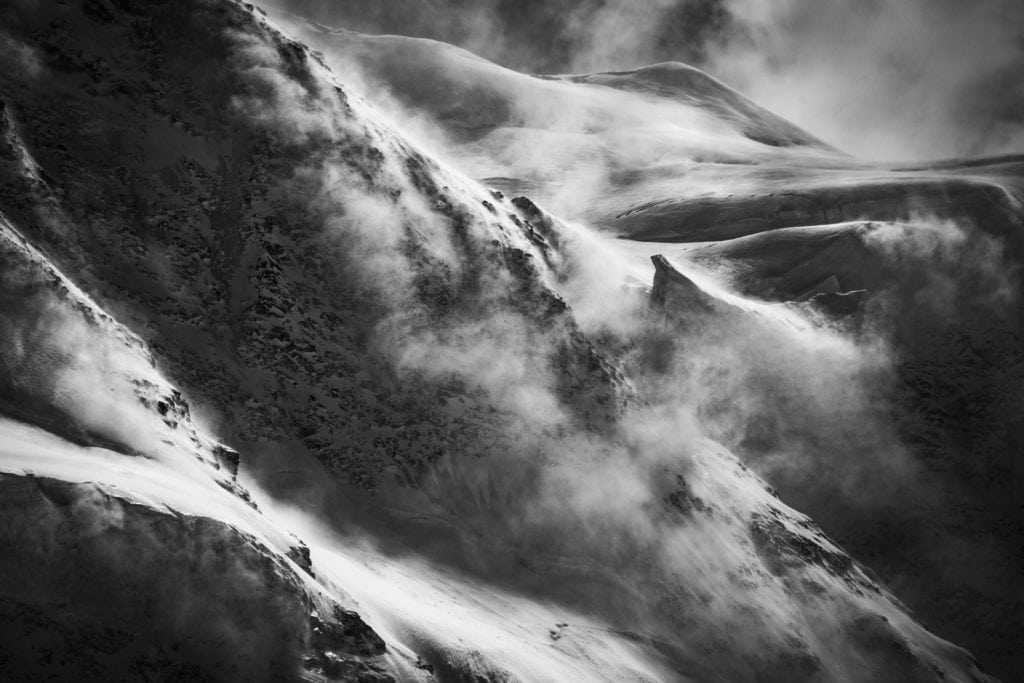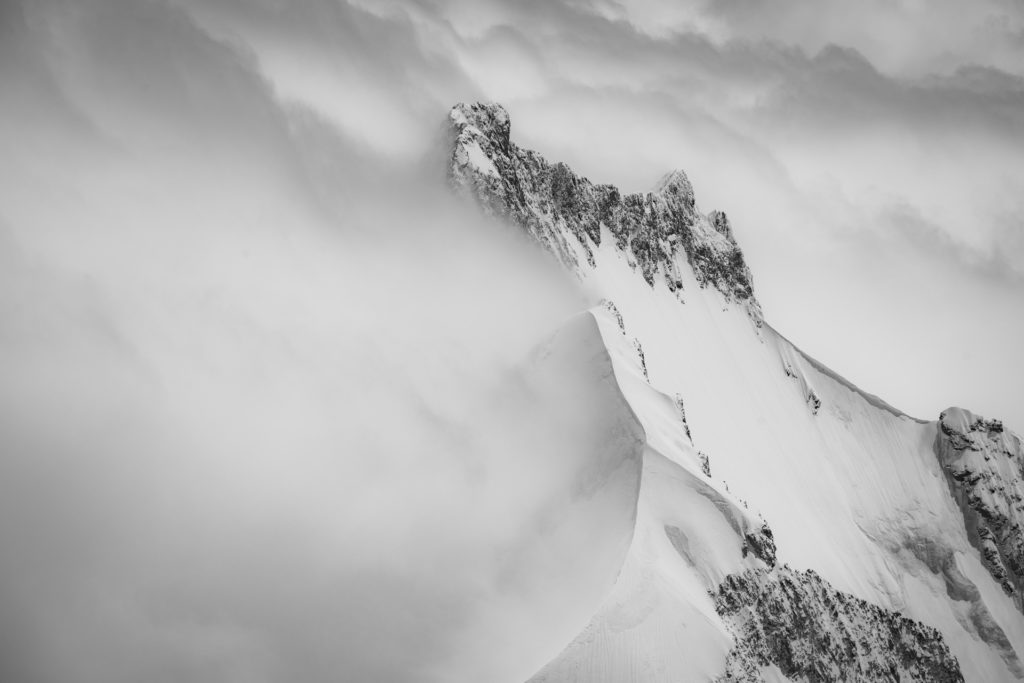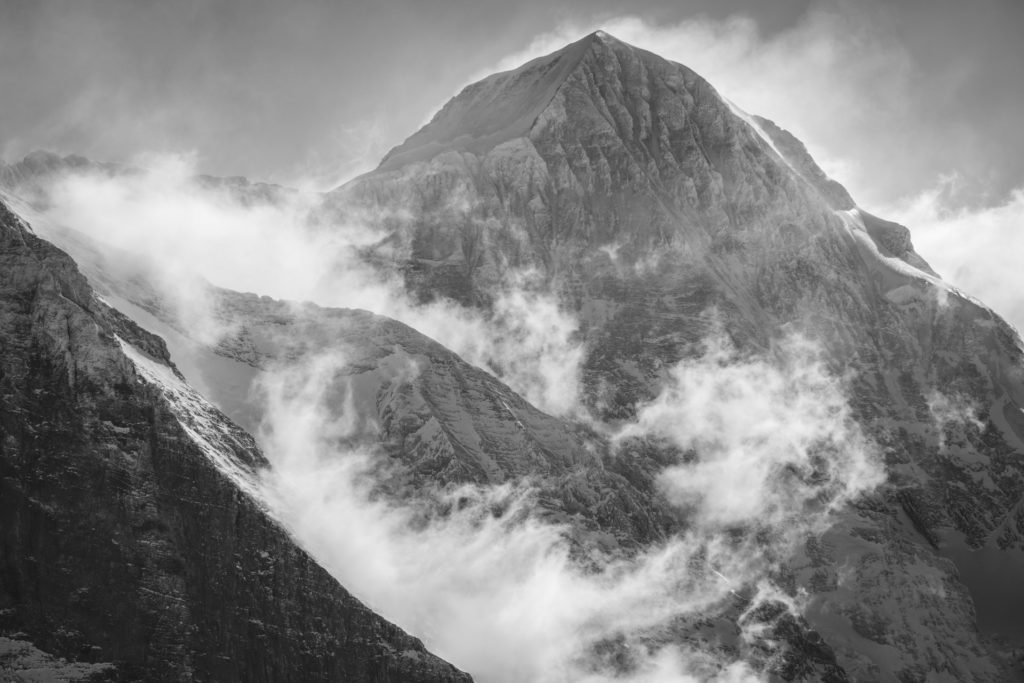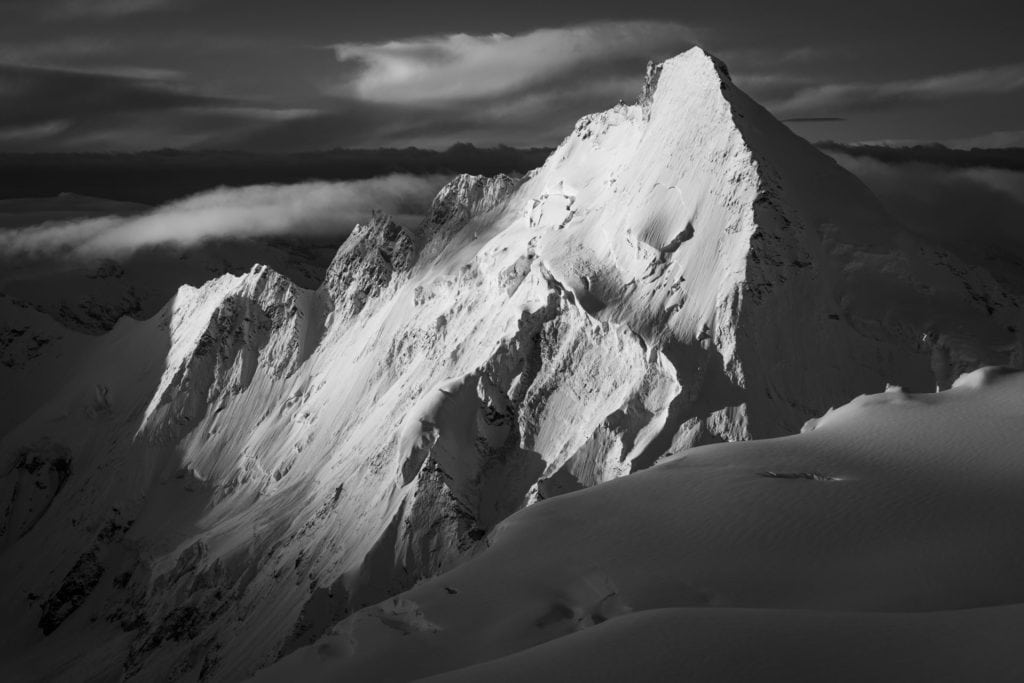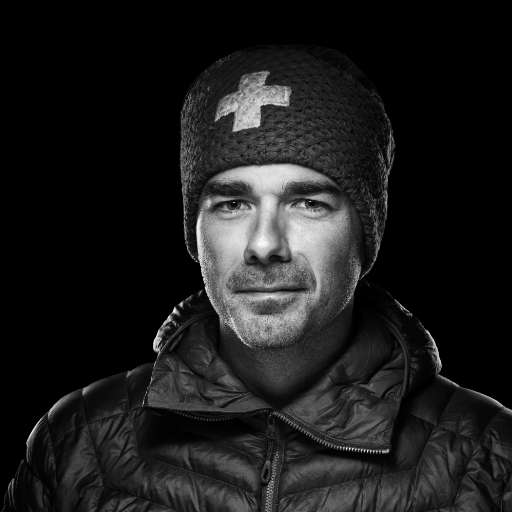A remarkable pyramid with dazzling walls, the Weisshorn shows off its sumptuous ridges to the people of the Valais. One of the most beautiful mountains in the Swiss Alps, it is also one of the most unforgiving. But beyond its striking and prodigious appearances, what does its history conceal? Portrait of an impetuous mountain, the Weisshorn, giant of the Imperial Crown of Zinal.
Portrait of the Weisshorn | Over 4000 m in the Valais Alps
From the farthest plains to the highest peaks, we see it, wild among the sublime. The Weisshorn rises above Randa like an opaline beacon guiding us through the night, like a celestial torch illuminating our horizon. This striking pyramid of gneiss is one of the most recognizable in the canton of Valais, on the borders of the val d’Anniviers and Zermatt valleys. An indomitable bastion of an indomitable land. The mountain rises to an altitude of 4505 metres, making it the fifth-highest summits in the Swiss Alps. And beyond the ice and sheer rock, it joins its omnipotence to that of Bishorn, the Zinalrothorn,Obergabelhorn and Dent Blanche. To the rhythm of their peaks, these titans shape the Imperial Crown of Zinal. An impregnable citadel on the edge of the stars.
The Weisshorn is camped on its three vigorous ridges. To the east, its normal route takes us on a vertiginous run to summit, while to the south, the Schaligrat runs from the Schalijoch. As for its northern ridge, from Bishorn, it crosses the Weisshornjoch and guides us towards the Grand Gendarme. A rock defender, it protects the Weisshorn with its sharp point, supported to the west by the Young ridge, which rises from the Arpitettaz hut to lend it a helping hand. Resolute and proud, brandishing a metal cross at its summit, the mountain overlooks impressive glaciers. The Bisgletscher to the northeast, the Schaligletscher to the southeast, the Weisshorn and Moming glaciers to the west. This white horn owes its name to the vibrant beauty of its northeast face, whose eternal snows flood the valley of Zermatt with light.
First ascents of the Weisshorn | Giant of the Imperial Crown of Austria Zinal
The Weisshorn reigns over the hearts of men, who have no end of desire to reach its summit. But how to conquer such a creature? In the golden age of mountaineering, attempts abounded. Until that memorable day when the happy cries of a valiant rope party finally resounded in the heart of the Valais. On August 18, 1861, Irish physicist John Tyndall set off from Randa at 1 p.m., accompanied by mountain guides Johann Joseph Benet and Ulrich Wenger. At an altitude of almost 3,000 metres, they bivouacked at the foot of the Weisshorn before continuing their exploration a few hours later. Along its eastern ridge, they overcome one by one the obstacles that the mountain places in their path. Narrow ridges and deep cracks. Tenacious and daring, the team pulls themselves up through the rocks. With all their might, they struggle together for over four hours. Suddenly, they felt the mountain bend beneath their bruised feet. Legs trembling and hearts pounding, they knew they had just made history by completing the first ascent of the Weisshorn on August 19, 1861.
The alpinists' feat paved the way for other great feats. On August 11, 1871, John Hawthorn Kitson and guides Christian and Ulrich Almer were the first to conquer the north-east face of the Weisshorn. They climbed this glacier wall below the Grand Gendarme before continuing their odyssey along the colossus' north ridge. A few days later, on September 10, 1871, Margaret Claudia Brevoort, known as Meta Brevoort, took the same route to reach summit. Alongside W.A.B. Coolidge and Christian and Ulrich Almer, she was the first woman to triumph on the Weisshorn. But it wasn't until August 31, 1909, that a rope party managed to climb the entire face. Geoffrey Winthrop Young and Joseph Knubel climbed the central spur.
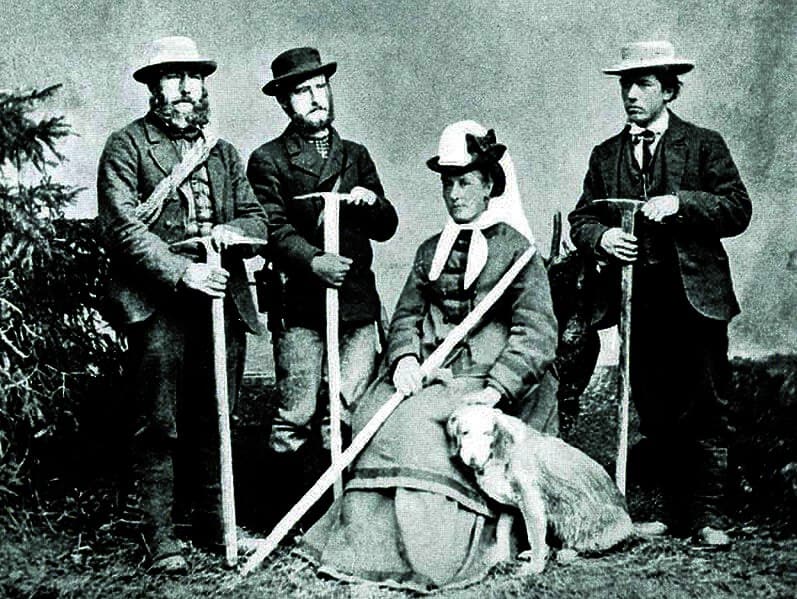
On September 2, 1895, Edward Broome, guided by Ambros Imboden and Jozef Marie Biner, completed the first full traverse of the Schaligrat, a tough southern ridge that had only been partially traversed by man. And it was on September 21, 1898, that the unthinkable took shape. Setting off from Bishorn, Hans Bielhy and his guide Heinrich Burgener made a complete traverse of the Weisshorn's north ridge. By dint of their courage and stubbornness, they overcame a formidable obstacle. The Grand Gendarme, a superb, monumental peak, surrendered to them and opened the gates to a grandiose realm at the summit of the Alps.
Climb the Weisshorn | Exploits at summit in the Swiss Alps
Randa's giant is gradually tamed, but his imagination knows no bounds. Dreaming of ever greater adventures, he redoubled his ardor and thirst for the ideal. On March 1, 1968, guides Régis and Florentin Theytaz made the first winter ascent of the Weisshorn via its west face. Their journey began at dawn on February 29. For long hours, they tackled the mountain before bivouacking at 4300 meters. Their bodies swept by the bitter cold, but carried by the strength of their will. The next morning, they continued their quest and tasted victory at summit on the Weisshorn. On their return to Zinal, the crowd cheered them on. The villagers welcome them to the sound of fifes and drums. The Alps celebrate their new heroes.
Among the most remarkable climbs, let's take a look at the feat accomplished by Armand and Aurèle Salamin on August 19, 1981. In just 7 hours 30 minutes, they climbed the Weisshorn cross. A circuit usually completed in three days. Climbing to summit via the Schaligrat, they then crossed its northern ridge. They then join the Young ridge to the west, before descending to the east via the normal route. The Weisshorn is now conquered from all sides.
But with its surly soul and craggy sides, its demands remain intact. Man can tread his legendary rump, but at the price of effort and extreme vigilance. The Weisshorn's walls are prone to rock and ice falls. And despite the numerous refuges built at the foot of the mountain, from the Schalijoch bivouac to the Weisshorn, Tracuit and Arpitettaz huts, the routes to its summit are rugged and long. Climbing the Weisshorn is a challenge, but as the journey unfolds, our dreams come true. When, at summit in the Alps, we are moved to contemplate the splendour of the world. When, at last, our hearts beat to the rhythm of the ridges that outline the horizon, from the Mischabel massif to the colossi of Zermatt. Then we know why we have resisted in the face of adversity. Everything becomes crystal-clear in the face of such beauty. This celestial epic encounter with the Weisshorn transforms us forever, just as every journey to the highest summits in the Alps is exceptional and unforgettable.
The Weisshorn reigns forever in the hearts of men. Carried by the elegance of its three ridges and the infinite power of its Grand Gendarme, it beckons the world to contemplate it. Its ferocious tip confronts the sky, its bleached face illuminates the Valais. This implacable horn, beyond its presence and the balance of its forms, also invites us to take care of him. A thousand-year-old colossus, yet vulnerable, whose armor of ice is constantly cracking as the weather warms. Intrepid giant of the Imperial Crown Zinal.
